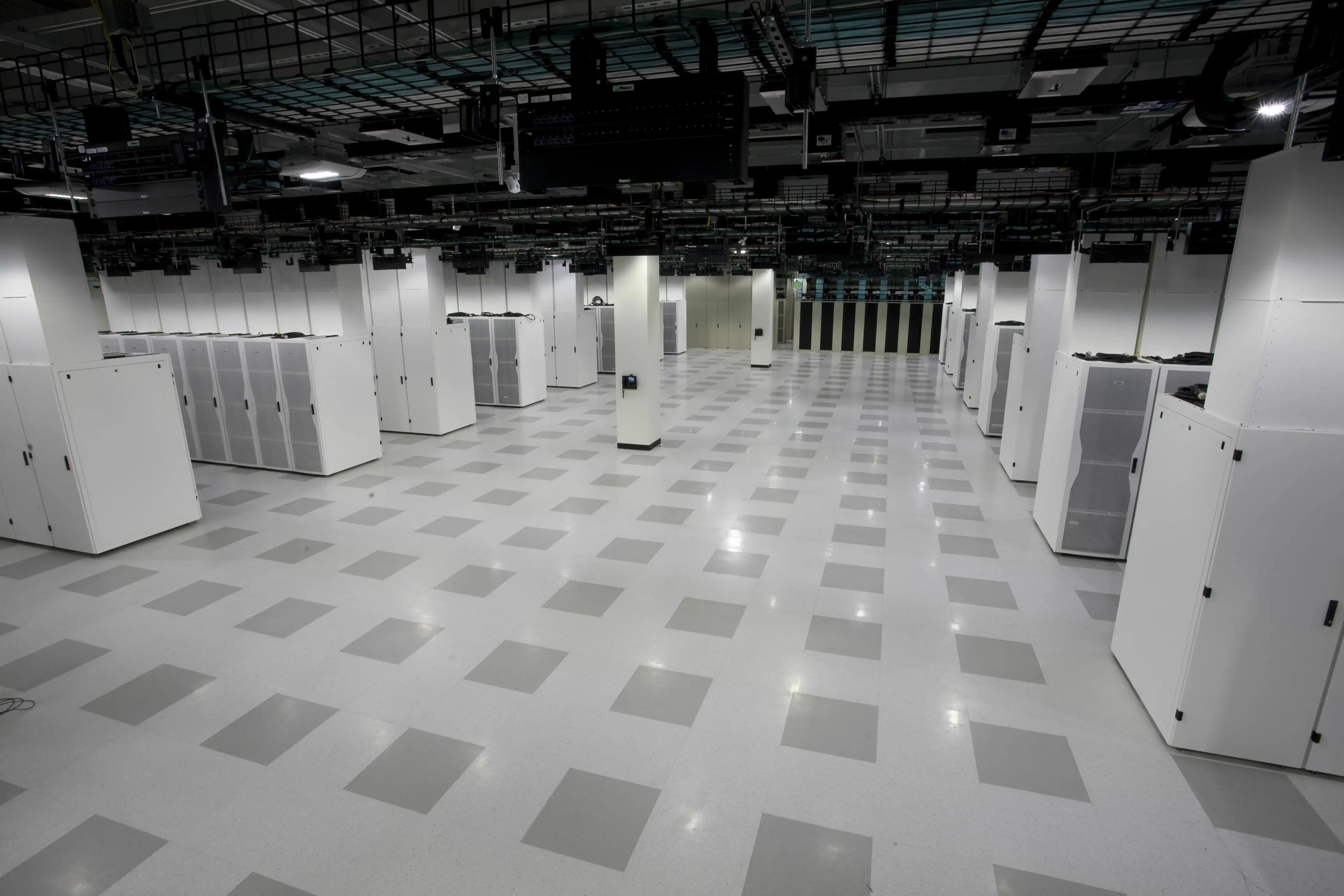Airflow Management Considerations for Raised Floor vs. Slab Floor Environments18 min read

Data centers on slab floors and data centers on raised floors both have their proponents and opponents and the pros and cons have been debated on stages at industry conferences, at site-specific sales pitches and across happy hour bar stools. Where you fall in this debate may often reflect what product or system you are selling, whether your data center is a profit center or overhead, whether you’re big enough to have on-staff design expertise or small enough to rely on third party design expertise, or whether site design is controlled by IT or facilities. In many cases, there is no debate or discussion; rather the question is settled by what may be in place at a purchased or leased space. Regardless of whether the resulting architecture is intentional or incidental, airflow management is critical to optimizing the effectiveness of any data center space, though the prioritization of those elements of airflow management (raised floor, rack, row and room) may vary based on the associated architectural elements.
Raised Floor Environment
Not to belabor the obvious, …but, as one might expect, the most important airflow management element for a data center on a raised floor is: the raised floor. This is pretty basic and this is also where the whole field of data center airflow management actually became a subject of conversation and study. The starting point is assuring the raised floor is high enough to allow effective and efficient distribution of conditioned air. The Darcy-Weisbach equation {Δp = λ (l / dh) (ρ v2 / 2)} can be used to determine the pressure head under the floor that would be added to the load on perimeter cooling unit fans, but a computational fluid dynamics (CFD) model will usually be a much easier way to determine if a floor is high enough to assure adequate air is delivered to every rack in a room. Sometimes raised floor height is a given rather than a design variable, in which case my advice is that it is always preferable to get a good assessment of what kind of IT load that floor height can handle BEFORE you sign a lease or offer sheet and find that you’re either stuck with a perpetually under-performing space or a resume-inducing budget-buster remodel project.
The floor element also involves plugging all the holes in the floor that would divert conditioned air delivery away from the point of use at the front of equipment racks and then assuring that the proper perforated floor tiles have been selected for the airflow required for each rack. The floor tile vendors can help with this decision process or, again, a CFD model will reveal which type of floor tile, and how many perforated floor tiles, will deliver the best performance for any specific space.
With the raised floor airflow management elements optimized, the application of the remaining elements can be much more forgiving, up to some per-rack density threshold that will vary based all the variables associated with the space. That threshold can be identified by warnings from overheated equipment where rack and row airflow management has been, shall we say, somewhat less than stellar, or can be predicted by CFD models. The pro-active approach would naturally be to address these elements at the start and thereby remove both the guess work and the midnight warning call or the much more insidious unnecessary utility billing for wasted cooling. That pro-active approach merely involves assuring every rack mount space is filled with something – IT equipment (not shelf-mounted), blanking panels, vendor advertising panels, or grade-school art projects, as well as some means of sealing any open vertical space between equipment mounting rails and the cabinet frame or side panels. For those of the re-active rather than pro-active inclination, the next load density threshold will drive applying your airflow management best practices at the row level to further maintain that separation between cool supply air and warm return air. In most cases, this is accomplished before it even gets much thought – all the server cabinets are abutted with no gaps; however, obstacles such as columns can make this level of separation a little more problematic. There are productized plugs to these gaps, but your building maintenance millwright or local Bubba’s Home Renovation can easily address these airflow management shortcomings.
Finally, in most cases, room level airflow management is the least critical element on a raised floor, as long as an adequate volume of conditioned air is being supplied to every perforated floor tile. There are, however, reasons to give this element more attention. For example, if the row level airflow management has been fully optimized with some kind of complete segregation through containment aisles or chimney cabinets, the supply airflow volume no longer needs to account for some minimum flow level through every perforated floor tile, or at least some minimum flow level to each tile and associated rack; rather, with full containment, delivery does not need to be anywhere as near geographically precise and can instead be more total demand-precise. That is to say, now the economic benefits can be realized from providing the total minimum volume of air to meet the total room requirement without having to over produce to assure each specific point of use is being adequately served. In addition, if the raised floor is serving modules of contained cold aisles, research reported on by Tate Access Floors has shown that over-pressurized aisles can result in very significant volumes of bypass air allowed directly through the IT equipment. In this case, room-level airflow management needs include a control system to maintain a minimum positive pressure within the contained cold aisles.
Slab Floor Environment
While deploying on a raised floor can allow for incrementally phasing in the different elements of airflow management, a slab floor will only produce all those benefits proponents of this architecture tout if all the elements of airflow management are rolled out together at the beginning of a project. My keen sense of the obvious tells me that perhaps the raised floor elements of airflow management may not be so critical in a slab floor space, but the other elements are all critical to creating and maintaining a well-functioning holistic eco-system. For example, fans only need to meet the total demand of the room with some small percentage headroom and fan law economies can best be delivered when fan speeds are tied to some feedback loop indicating fluctuations in load, ideally pressure differentials, but UPS load or server temperature variations can also be tapped for such a feedback loop. However, pressure differentials, UPS load or temperature sensors will all be sending misleading data if there are any breaches in the row level and cabinet level airflow management scheme of maintaining separation between supply and return air masses.
This all-in requirement for airflow management on a slab floor is not merely a suggestion for realizing all the energy savings promoted by the various associated vendors of the elements of this eco-system. After all, there are some slab-floor data centers that came into existence merely to avoid the cost of installing a raised floor without any thought about airflow management and resultant energy and associated dollar savings. However, in a data center on a slab floor, you do sacrifice your precision-locality air delivery, unless you are doing overhead ducting with some kind of vent (no diffuser, precision, remember) delivering with the relative accuracy of perforated floor tiles to each server rack. However, even with precision delivery, return air needs to be accounted for so it does not contaminate the supply air streams. Then, in those cases without precision air delivery, supply paths will likely be crossing return paths, resulting not only in the expenses of over-producing air volume and lowering set points, but the resultant contaminated mixtures, at best, will dramatically limit density levels and, at worst, will create hot spot alarms.
Therefore, regardless of the motive that drove the decision to deploy on a slab floor rather than on a raised floor, an all-in approach to airflow management is going to be more critical; whereas deploying on a raised floor may be a little more forgiving of an incremental deployment of airflow management best practices. Nevertheless, am I going to be able to sleep easily knowing I appear to have promoted some degree of undisciplined slovenliness? I think not! Thus, all equivocation to the contrary, the moral of this story is that you really should go ahead and do it right at the beginning and not worry about what you may have procrastinated later on when you’re too busy to take your finger off the panic button.
The industry's easiest to install containment!
AisleLok® solutions are designed to enhance airflow management,
improve cooling efficiency and reduce energy costs.
The industry's easiest to install containment!
AisleLok® solutions are designed to enhance airflow management,
improve cooling efficiency and reduce energy costs.

Ian Seaton
Data Center Consultant
Let's keep in touch!
0 Comments